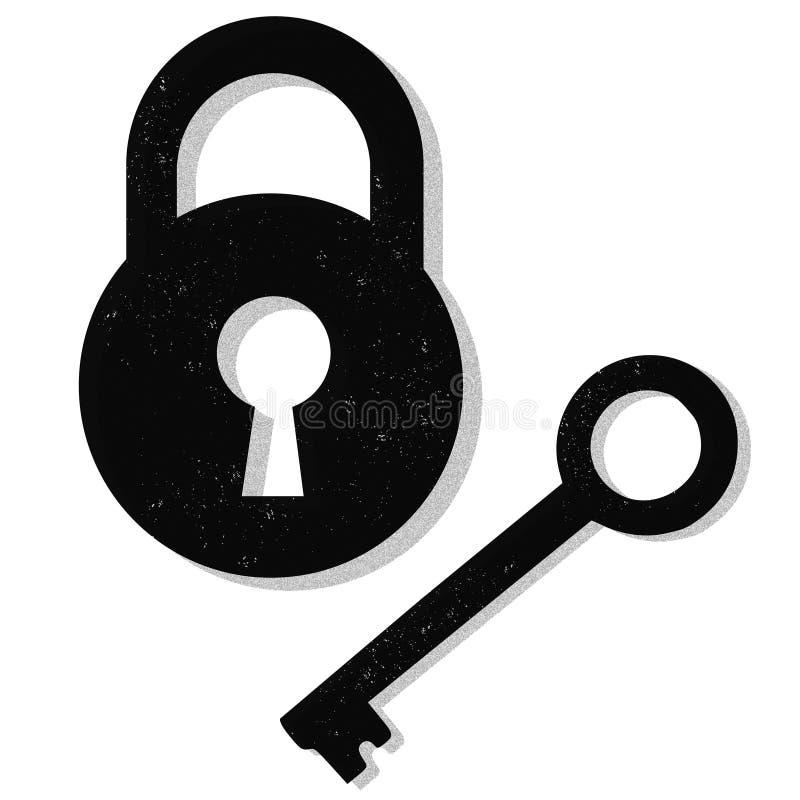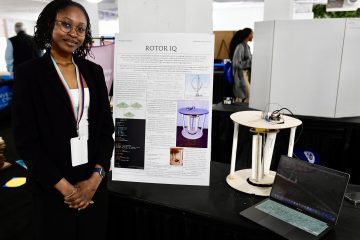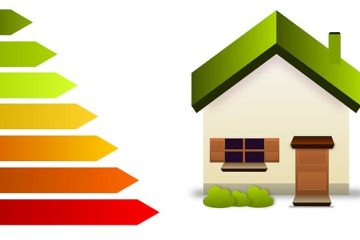Table of Contents
- Understanding Energy Efficiency Resource Standards and Their Impact on Utility Regulations
- Key Components of Effective Energy Efficiency Resource Standards
- Strategies for Implementing Energy Efficiency Resource Standards in Diverse Regions
- Measuring Success: Metrics and Evaluation for Energy Efficiency Standards
- Future Trends in Energy Efficiency Resource Standards and Their Role in Sustainable Development
- Q&A
- Wrapping Up
Understanding Energy Efficiency Resource Standards and Their Impact on Utility Regulations
Energy efficiency resource standards (EERS) are pivotal in shaping how utilities operate in a sustainable and financially responsible manner. These standards mandate that utility companies achieve specific energy savings targets, which in turn influences their investment strategies and service offerings. By incorporating efficiency measures, such as promoting energy-saving appliances and incentivizing customers to adopt renewable technologies, utilities can streamline their operations, reduce demand on the grid, and meet regulatory compliance without needing to invest in costly infrastructure upgrades.
The impact of EERS extends beyond just utilities; it also significantly affects consumers and the overall economy. Customers benefit from reduced energy bills as they participate in programs designed to improve the efficiency of their homes and businesses. Moreover, these standards foster job creation in the energy sector as new roles arise in energy auditing, retrofitting buildings, and implementing energy efficiency measures. Additionally, EERS contribute to decreased greenhouse gas emissions, aligning with broader environmental goals and helping mitigate climate change effects.
| Aspect | Impact |
|---|---|
| Cost Savings | Reduces energy expenses for consumers |
| Job Creation | Stimulates employment in energy sectors |
| Environmental Benefits | Reduces greenhouse gas emissions |
As these standards evolve, utilities are increasingly leveraging technology to maximize energy efficiency. Smart meters and advanced data analytics enable providers to monitor consumption patterns and develop customized programs that address specific needs. Additionally, EERS can encourage collaboration among utilities, government agencies, and private organizations, leading to innovative solutions that enhance energy efficiency efforts across various sectors. This collective approach not only benefits the utilities’ accountability in achieving their goals but also fosters a culture of sustainability among consumers and businesses alike.


Key Components of Effective Energy Efficiency Resource Standards
Effective energy efficiency resource standards (EERS) serve as a framework for guiding utilities and governments in their efforts to promote sustainable energy consumption. A crucial component of these standards is the establishment of clearly defined goals and metrics for energy savings. This involves defining specific benchmarks that both utilities and consumers can aim for, ensuring accountability and progress tracking. By setting measurable targets, EERS encourage innovation and the adoption of advanced technologies while providing a mechanism for evaluating success over time.
Another important element is the inclusion of incentive programs designed to motivate stakeholders. These can take various forms, including financial rebates for energy-efficient appliances, grants for retrofitting buildings, or penalties for failing to meet efficiency targets. By creating tangible benefits, such programs encourage both businesses and homeowners to participate actively in energy-saving initiatives. This collaborative approach fosters a culture of energy efficiency throughout the community, ultimately leading to greater overall compliance with standards.
Lastly, effective EERS require a robust framework for data collection and analysis. Accurate data provides insights into energy consumption patterns, effectiveness of implemented measures, and areas needing improvement. Regular assessments should be conducted to refine standards based on the latest trends and technological advancements. This proactive adjustment ensures that energy efficiency polices remain relevant, impactful, and capable of addressing evolving energy challenges.


Strategies for Implementing Energy Efficiency Resource Standards in Diverse Regions
Implementing energy efficiency resource standards (EERS) requires tailored strategies that account for the unique characteristics of diverse regions. The first step is to conduct a thorough assessment of each region’s energy profile, local climate conditions, and economic landscape. This foundational understanding allows policymakers to set realistic energy savings targets. Moreover, engaging stakeholders—including local utilities, government officials, and community organizations—can foster collaboration and generate support for specific initiatives.
Next, developing educational and outreach programs can empower residents and businesses to adopt energy-saving measures. These initiatives may include:
- Workshops to educate homeowners on energy-efficient upgrades.
- Incentive programs offering rebates or grants for energy-efficient appliances.
- Partnerships with local businesses to promote energy efficiency as a competitive advantage.
Furthermore, utilizing technology and innovative solutions can enhance the effectiveness of EERS. For instance, the use of smart meters and energy management systems allows for real-time tracking of energy consumption, making it easier for users to optimize their usage. Implementing predictive analytics can also help local governments anticipate energy demands and adjust programs accordingly.
| Strategy Type | Description | Expected Outcome |
|---|---|---|
| Assessment | Analyze local energy profiles and needs | Targeted and effective EERS implementation |
| Outreach | Educational workshops and incentive programs | Increased community participation |
| Technology | Deploy smart energy systems and analytics | Improved energy efficiency tracking |


Measuring Success: Metrics and Evaluation for Energy Efficiency Standards
To effectively gauge the impact of energy efficiency resource standards, it’s essential to utilize a variety of metrics and evaluation techniques. This provides a comprehensive view of how these standards influence energy consumption, cost savings, and overall sustainability. Key metrics to consider include:
- Energy Savings (kWh): The reduction in energy use as a result of implemented standards.
- Cost Savings: The financial benefits accrued from decreased energy consumption.
- Emissions Reduction: Changes in greenhouse gas emissions, contributing to climate goals.
- Participation Rates: The number of entities (residential or commercial) that comply with or are impacted by these standards.
Additionally, evaluation methodologies play a crucial role in measuring success. Strategies such as Benchmarking—comparing current performance against industry standards or historical data—help organizations identify areas for improvement. Furthermore, conducting Participant Surveys can provide valuable insights into user satisfaction and behavior changes resulting from energy efficiency programs.
To visualize the effectiveness of these strategies, the following table outlines a simple framework of energy efficiency metrics against their evaluation methodologies:
| Metric | Evaluation Methodology | Frequency of Evaluation |
|---|---|---|
| Energy Savings | Monitoring Systems | Monthly |
| Cost Savings | Financial Analysis | Quarterly |
| Emissions Reduction | Environmental Assessments | Yearly |
| Participation Rates | Surveys and Registration Data | Bi-annually |


Future Trends in Energy Efficiency Resource Standards and Their Role in Sustainable Development
As the world pivots towards greener practices, energy efficiency resource standards (EERS) are evolving to meet the increasing demand for sustainable development. These standards are not merely regulatory frameworks; they embody a strategic shift towards optimizing energy consumption across various sectors. By implementing advanced technologies and modernizing infrastructure, governments and organizations are discovering multiple pathways to reduce energy waste, leading to significant environmental benefits. This evolution is essential not only for compliance but also for fostering public trust in energy-efficient solutions.
A key facet of future trends in EERS involves a focus on integrated energy management systems. These systems enable real-time monitoring and optimization of energy use, helping businesses and homes adjust consumption based on demand and operational needs. Such proactive measures can significantly lower energy expenditure while maximizing efficiency. A few expected advancements include:
- Smart metering: Enhancements in meter technology that allow for detailed consumption data analysis.
- Incentive programs: Tailored programs that encourage energy-saving measures among consumers and businesses.
- Decarbonization strategies: Plans focusing on reducing carbon footprints through cleaner alternatives.
Moreover, the incorporation of renewable energy sources into EERS is set to play a transformative role. As policies increasingly support the integration of solar, wind, and other renewables, energy efficiency standards will not only drive down operational costs but will also contribute to a more resilient energy grid. Consider the following table that illustrates the comparative benefits of renewable energies incorporated into EERS:
| Type of Renewable Energy | Energy Savings (%) | CO2 Reduction (Metric Tons) |
|---|---|---|
| Solar Power | 30-50 | 2-4 |
| Wind Energy | 40-60 | 4-6 |
| Geothermal Energy | 20-40 | 1-3 |
Such synergistic approaches underscore that energy efficiency resource standards will not only drive sustainable development but also fuel economic growth. By harnessing technology, innovation, and strategic policy measures, stakeholders can create a future where energy is used judiciously, supporting both environmental health and economic prosperity.
Q&A
Q&A on Energy Efficiency Resource Standards (EERS)
Q1: What are Energy Efficiency Resource Standards (EERS)? A: Energy Efficiency Resource Standards (EERS) are regulatory mandates that require utilities or energy providers to achieve specific energy-saving targets over a defined period. These standards are designed to promote energy efficiency initiatives and can result in significant cost savings and reduced environmental impact.Q2: How do EERS benefit consumers? A: Consumers benefit from EERS through lower energy bills and improved energy efficiency. By encouraging utilities to invest in energy-saving programs, consumers can access rebates, incentives, and improved energy efficiency technologies, contributing to reduced overall energy consumption.
Q3: What role do EERS play in achieving environmental goals? A: EERS play a vital role in reducing greenhouse gas emissions and lessening dependence on fossil fuels. By pushing for energy efficiency, these standards help decrease the demand for energy production, thereby lowering the environmental footprint associated with electricity generation and contributing to the fight against climate change.
Q4: How are EERS implemented and monitored? A: Implementation involves utilities designing and executing energy efficiency programs that meet state or federal standards. Monitoring is typically managed by regulatory bodies or independent evaluators who assess the progress and effectiveness of these initiatives, ensuring that utilities remain in compliance with set goals.
Q5: Are EERS the same in every state? A: No, EERS vary from state to state. Each state’s regulations and energy policies influence the specific targets, guidelines, and incentives related to energy efficiency. Some states may have aggressive EERS, while others might not have formal standards in place, highlighting the importance of localized approaches to energy efficiency.
Q6: What challenges do utilities face in meeting EERS? A: Utilities often encounter challenges such as the need for significant investment in new technologies, changes in customer behavior, and the effective marketing of energy efficiency programs. Additionally, the fluctuating regulatory landscape and varying energy demands can complicate efforts to meet established efficiency targets.
Q7: How can individuals contribute to energy efficiency goals? A: Individuals can contribute to energy efficiency goals by adopting energy-efficient appliances, participating in utility programs, and being mindful of their energy usage. Simple actions like turning off lights when not in use, utilizing programmable thermostats, and engaging in community energy conservation efforts can make a significant difference.
Q8: Is there a future for EERS? A: Absolutely! As the focus on sustainability and energy conservation continues to grow, EERS are expected to evolve, becoming more stringent and comprehensive. Innovations in technology and shifts towards renewable energy sources will likely enhance the effectiveness of these standards, paving the way for a more energy-efficient future.
This Q&A aims to clarify common questions surrounding Energy Efficiency Resource Standards, highlighting their significance in energy conservation and consumer benefits.




0 Comments